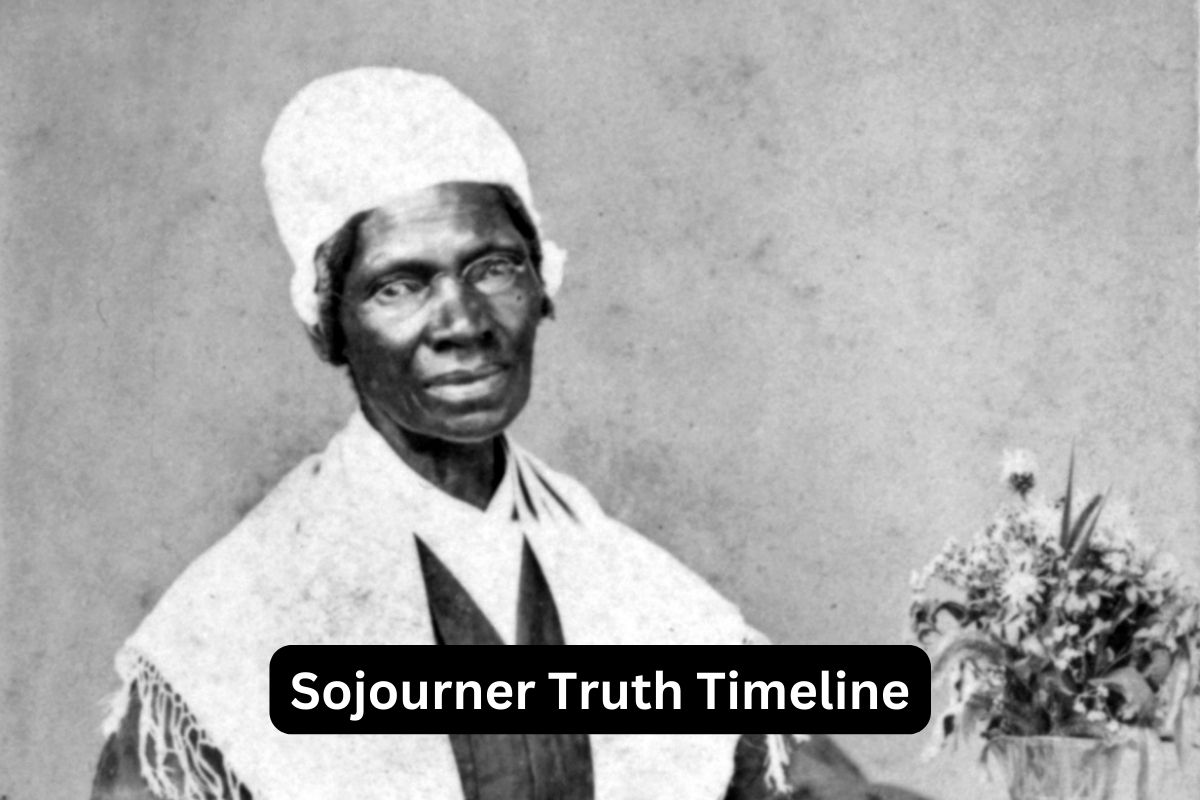Sojourner Truth, born as Isabella Baumfree around 1797, was an African American abolitionist and women’s rights activist. Born into slavery in New York, she endured a difficult early life but eventually gained her freedom.
Inspired by her religious beliefs, she changed her name to Sojourner Truth and dedicated her life to advocating for the rights and equality of African Americans and women.
Sojourner Truth is best known for her powerful speeches, including her famous “Ain’t I a Woman?” speech delivered at the Women’s Rights Convention in 1851. Her speeches highlighted the intersectionality of gender and race and called for justice and equality for all.
She also published her memoir, “The Narrative of Sojourner Truth: A Northern Slave,” which provided a firsthand account of her experiences as an enslaved person and became an influential work in the abolitionist movement.
Throughout her life, Sojourner Truth fought tirelessly against slavery, promoting the abolitionist cause, and worked towards women’s rights and suffrage. She met with influential figures such as President Abraham Lincoln, leaving a lasting impact on the fight for equality in the United States.
Sojourner Truth’s legacy as a courageous and influential activist continues to inspire and empower people to this day. Her dedication to justice, equality, and the pursuit of truth has cemented her place as an iconic figure in American history.
Timeline of Sojourner Truth
1797 – Sojourner Truth is born as Isabella Baumfree in New York
Sojourner Truth is born as Isabella Baumfree in Swartekill, New York. Her exact date of birth is not known, as slave births were often not recorded with precision. She is born into slavery to parents who are owned by Dutch-speaking farmers named Hardenbergh.
1826 – Isabella escapes slavery with her infant daughter
Isabella, now a mother to five children, escapes from slavery with her infant daughter, Sophia. Fearing that her owner, John Dumont, would sell her young son, Peter, she leaves him behind.
With the help of Isaac and Maria Van Wagenen, a Quaker couple who oppose slavery, Isabella finds refuge and protection in their home in New Paltz, New York.
1828 – Isabella moves to New York City and gains her freedom
Isabella moves to New York City, leaving her other children behind temporarily, as she is unable to bring them with her due to the high risk of being captured and returned to slavery.
In the city, she works as a domestic servant for various families, including the Van Wagenens, who remain supportive of her. Isabella attends religious services and becomes involved in the religious revivalist movement, which helps shape her spiritual beliefs and activism.
During this time, Isabella fights for custody of her son Peter, who remains in slavery. After years of legal battles, she successfully negotiates his emancipation in 1828, reuniting with him in New York City.
The experience of escaping slavery and regaining her son greatly influences Isabella’s determination to fight for freedom and justice, leading her to eventually change her name to Sojourner Truth.
1843 – Isabella changes her name to Sojourner Truth
Inspired by her religious beliefs and the mission she feels called to pursue, Isabella Baumfree changes her name to Sojourner Truth. She believes that her purpose is to travel and preach the truth of God’s word and the importance of social justice.
1851 – Sojourner Truth delivers her famous speech, “Ain’t I a Woman?” at the Women’s Rights Convention
Sojourner Truth delivers her famous speech, commonly known as “Ain’t I a Woman?”, at the Women’s Rights Convention in Akron, Ohio. In her speech, she passionately advocates for equal rights for women and challenges the prevailing notions of gender and race.
Her powerful words highlight the intersectionality of gender and race and emphasize the inherent strength and dignity of all women.
1854 – Sojourner Truth publishes her memoir, “The Narrative of Sojourner Truth: A Northern Slave”
Sojourner Truth publishes her memoir, “The Narrative of Sojourner Truth: A Northern Slave.” The book chronicles her experiences as an enslaved person, her escape to freedom, and her subsequent work as an abolitionist and women’s rights activist.
It becomes an important historical document, shedding light on the harsh realities of slavery and inspiring others to join the fight for liberation and equality.
1864 – Sojourner Truth meets President Abraham Lincoln
Sojourner Truth meets with President Abraham Lincoln at the White House. She shares her concerns about the treatment of African American soldiers and lobbies for policies that promote equality and justice.
Her meeting with the President highlights her influence as a prominent abolitionist and activist, and her dedication to advocating for the rights of African Americans during a critical time in American history.
1883 – Sojourner Truth passes away in Battle Creek, Michigan
Sojourner Truth passes away on November 26 in Battle Creek, Michigan, at the age of approximately 86. Towards the end of her life, she had been residing in Battle Creek, where she was surrounded by a supportive community of abolitionists, activists, and friends.
Her death marked the end of a remarkable life dedicated to fighting for freedom, equality, and justice.
Sojourner Truth’s passing was mourned by many who had been inspired by her powerful speeches and unwavering commitment to social causes. Her impact on the abolitionist and women’s rights movements continued to resonate long after her death.
Her legacy as a prominent figure in American history, an advocate for marginalized communities, and a symbol of strength and resilience remains an important part of the ongoing struggle for equality.
Sojourner Truth’s contributions to society and her tireless efforts in pursuit of justice ensure that her memory endures as an inspirational figure in the fight against oppression.
